Music is a combination of expression and creativity and shared with anyone willing to lend an ear. It has the commanding ability to alter our mood and take us far away from reality. Whether you’re an album collector or a stub saver, the experience of music is universally enjoyed. It hasn’t been until recently that music has been combined with a performance that satisfies our most commanding of senses, our vision. The marriage is complimentary in both directions, filling voids the other can’t and accentuating time in harmony. Lighting designers are taking music as a base and adding to the body of work and the prevalence of their role has only been felt for a short time now, but ideas are being explored today and the standard is being pushed in creative directions. The jam scene in particular is a hot bed for new talent and their importance is becoming more and more apparent. I got the chance to talk to a variety of lighting directors, each bringing their own skill set to the table. Jefferson Waful of Umphrey’s McGee, Johnny R. Goode of The Disco Biscuits, Luke Stratton of Dopapod, and Ryan Bress of The Manhattan Project all shared their unique perspective for an encompassing look at the newest member of the band.
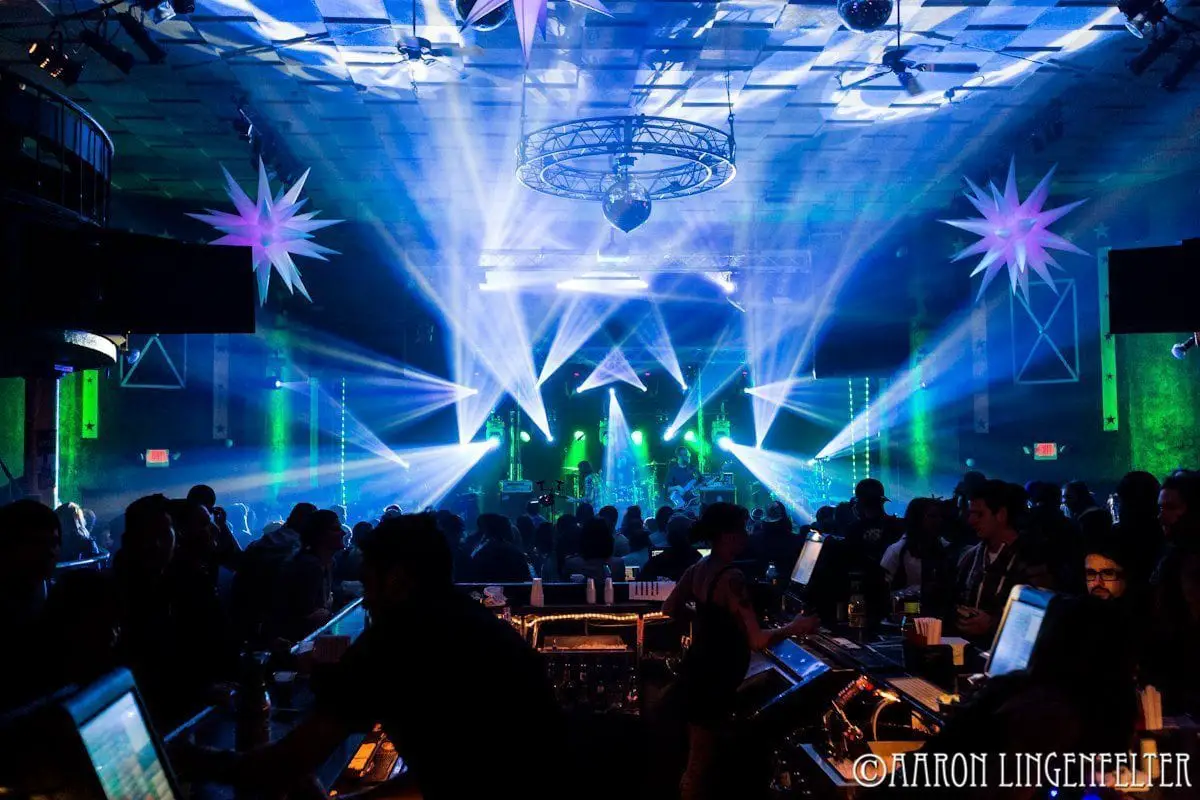 Getting into this line of work happens serendipitously as told by each of these lighting directors. From being a sound engineer to following a band on tour, each took a different path and happened to be in the right place at the right time. Ryan started as a roadie for The Manhattan Project and says, “It started with learning their gear and how they liked it setup.” There were a lot of shows in that position until the band asked him to become the tour manager. Once each of them discovered lighting though, they were instantly hooked. Luke graduated from Berklee College of Music in 2009, with a focus on guitar performance. Despite all of that time spent on his degree, he says, “I get more out of lighting Dopapod, both personally and creatively, than I ever got out of playing the guitar.”
Getting into this line of work happens serendipitously as told by each of these lighting directors. From being a sound engineer to following a band on tour, each took a different path and happened to be in the right place at the right time. Ryan started as a roadie for The Manhattan Project and says, “It started with learning their gear and how they liked it setup.” There were a lot of shows in that position until the band asked him to become the tour manager. Once each of them discovered lighting though, they were instantly hooked. Luke graduated from Berklee College of Music in 2009, with a focus on guitar performance. Despite all of that time spent on his degree, he says, “I get more out of lighting Dopapod, both personally and creatively, than I ever got out of playing the guitar.”
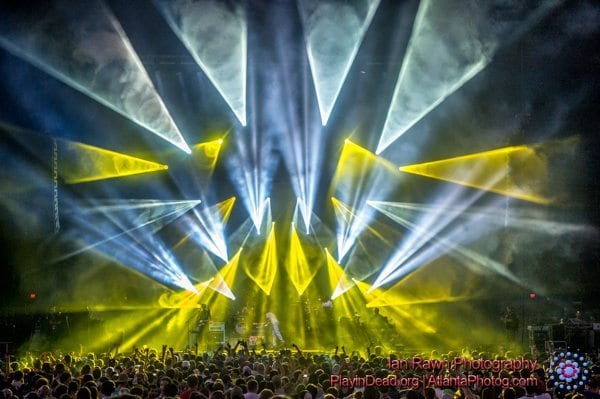 After that initial taste of photonic creativity, each went all in. Ryan says, “Every extra penny goes into my ‘new lights’ fund.” With that investment, lighting designers begin to develop a collection of tools to use, each with its own purpose. Johnny Goode says, “My go to piece of hardware would be my console; I wouldn’t do a Disco Biscuits show without it.” Luke on the other hand uses a bunch of MIDI controllers and various computers all hacked together. “It allows me to control the rig like an instrument”, he says. These tools begin to shape their style and how their shows are lit. Luke defines himself as using a “top down” approach. He says, “The music defines what I’m doing at all times.” Jefferson takes an artistic approach that pulls from his background in video editing. “I like to describe my style as graceful ballet with dramatic and ominous movements. When I used to edit video, I would put things in slow motion because it felt powerful. Now when the band is playing a million notes per second, I think it’s equally powerful to have a slow moving light rig.” And just as two guitarists can use the same three chords, yet sound different, two LD’s can use the same three colors, but create a completely different atmosphere.
After that initial taste of photonic creativity, each went all in. Ryan says, “Every extra penny goes into my ‘new lights’ fund.” With that investment, lighting designers begin to develop a collection of tools to use, each with its own purpose. Johnny Goode says, “My go to piece of hardware would be my console; I wouldn’t do a Disco Biscuits show without it.” Luke on the other hand uses a bunch of MIDI controllers and various computers all hacked together. “It allows me to control the rig like an instrument”, he says. These tools begin to shape their style and how their shows are lit. Luke defines himself as using a “top down” approach. He says, “The music defines what I’m doing at all times.” Jefferson takes an artistic approach that pulls from his background in video editing. “I like to describe my style as graceful ballet with dramatic and ominous movements. When I used to edit video, I would put things in slow motion because it felt powerful. Now when the band is playing a million notes per second, I think it’s equally powerful to have a slow moving light rig.” And just as two guitarists can use the same three chords, yet sound different, two LD’s can use the same three colors, but create a completely different atmosphere.
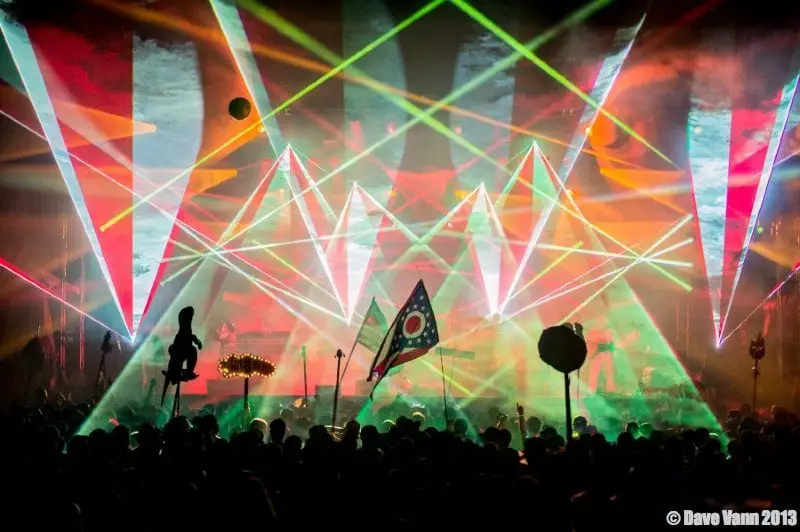
This isn’t to say that lighting a band is as easy as buying some hardware and playing with some lights. There’s a lot of preparation that goes into pulling off a show in even a small venue. The time it takes for these LDs ranged from an hour or two to needing a whole day for setup. This starts with surveying the venue and figuring out the layout. From there, the trusses, fixtures, and other hardware are brought in and setup along with the data and power lines. After that lengthy process, lighting designers still have to program their board to use what lights they were able to setup within a given venue. For Luke, the biggest issue is time. He says, “I do a ton of programming everyday. From updating positions to checking color looks; I never have the time I need to dial everything in as perfect as I’d like.” There are yet other annoyances like power limitations, haze and fog restrictions, and limited stage space. Jefferson says, “You have to get creative with how you stack lights and where you put them to work within the parameters of the given venue.” Overall, there’s a lot to overcome in order to bring their creative vision to fruition every night. There are times when it doesn’t always go as planned. Jefferson says, “We’re at this interesting stage in our career where we need to be big enough to play at a place like Red Rocks, but also be flexible enough to cram some of that same equipment into a small bar. You sometimes just have to psychologically prepare that it’s not always going to look the way you envision it every time.”
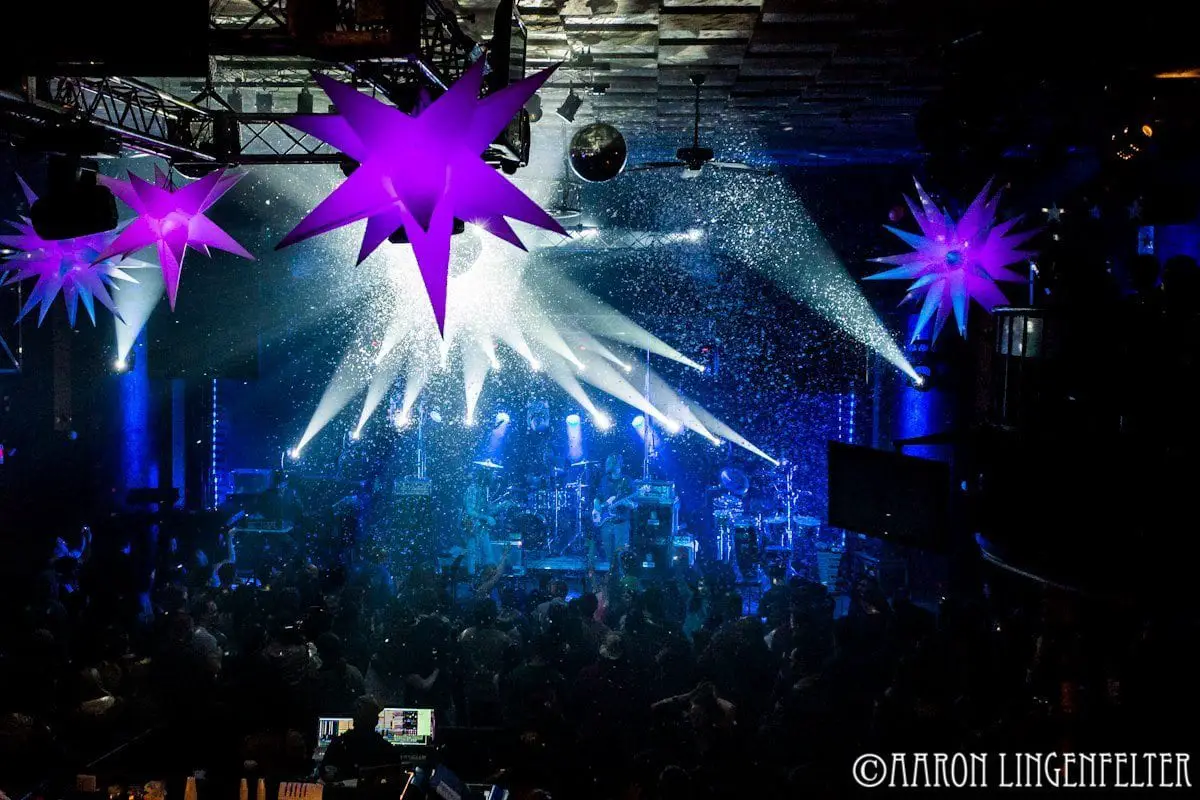 Since the jam scene is driving this, an additional hurdle for the lighting designer is the spontaneous nature of improv that most bands use within their live shows. Where lighting a rehearsed song eventually becomes part of muscle memory, improv adds the possibility of variance. Those nightly musical changes make it next to impossible for the lights to run on auto pilot. Jefferson says, “Because it’s happening in real time, I can be an active participant in that process.” Additionally, varying setlists only compounds the problem. Ryan Bress says, “Knowing a bands music is huge. You can’t depend on a setlist because a band will change it up last minute or even during a set.” Luke from Dopapod only uses one sequence at the moment; the rest of the time he says, “I’m playing the lighting designer’s equivalent of notes, chords and riffs instead of just pressing play.”
Since the jam scene is driving this, an additional hurdle for the lighting designer is the spontaneous nature of improv that most bands use within their live shows. Where lighting a rehearsed song eventually becomes part of muscle memory, improv adds the possibility of variance. Those nightly musical changes make it next to impossible for the lights to run on auto pilot. Jefferson says, “Because it’s happening in real time, I can be an active participant in that process.” Additionally, varying setlists only compounds the problem. Ryan Bress says, “Knowing a bands music is huge. You can’t depend on a setlist because a band will change it up last minute or even during a set.” Luke from Dopapod only uses one sequence at the moment; the rest of the time he says, “I’m playing the lighting designer’s equivalent of notes, chords and riffs instead of just pressing play.”
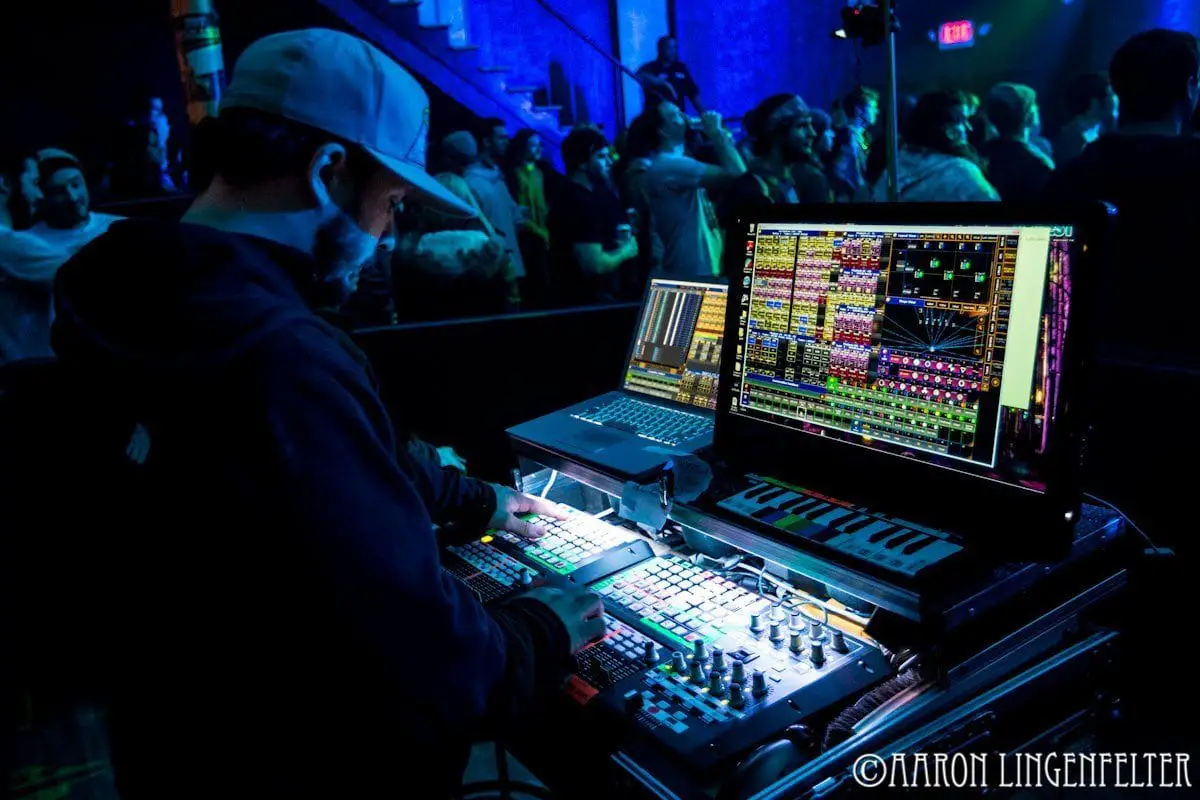 With all of this at their fingertips, there’s a lot of room for creativity and endless combinations of color and movement. The key is control and patience though as you don’t want to show your entire hand within the first two songs. Even new LDs understand that point. Ryan says, “If you give away all that your rig has to offer right off the bat, then you have nothing to deliver when the music gets more intense.” Luke echoes a similar point saying, “I usually get through a two-set show using only 75% of my cues and effects. I kind of treat it like a guitar and only use one effect or look in a specific song.” Jefferson Waful explains, “If the band is doing a ten minute improv, I’ll do nine and a half minutes of slow graceful movements. I’ll wait to throw in strobes and additional lights at the very end, otherwise you can lose the audience’s interest.”
With all of this at their fingertips, there’s a lot of room for creativity and endless combinations of color and movement. The key is control and patience though as you don’t want to show your entire hand within the first two songs. Even new LDs understand that point. Ryan says, “If you give away all that your rig has to offer right off the bat, then you have nothing to deliver when the music gets more intense.” Luke echoes a similar point saying, “I usually get through a two-set show using only 75% of my cues and effects. I kind of treat it like a guitar and only use one effect or look in a specific song.” Jefferson Waful explains, “If the band is doing a ten minute improv, I’ll do nine and a half minutes of slow graceful movements. I’ll wait to throw in strobes and additional lights at the very end, otherwise you can lose the audience’s interest.”
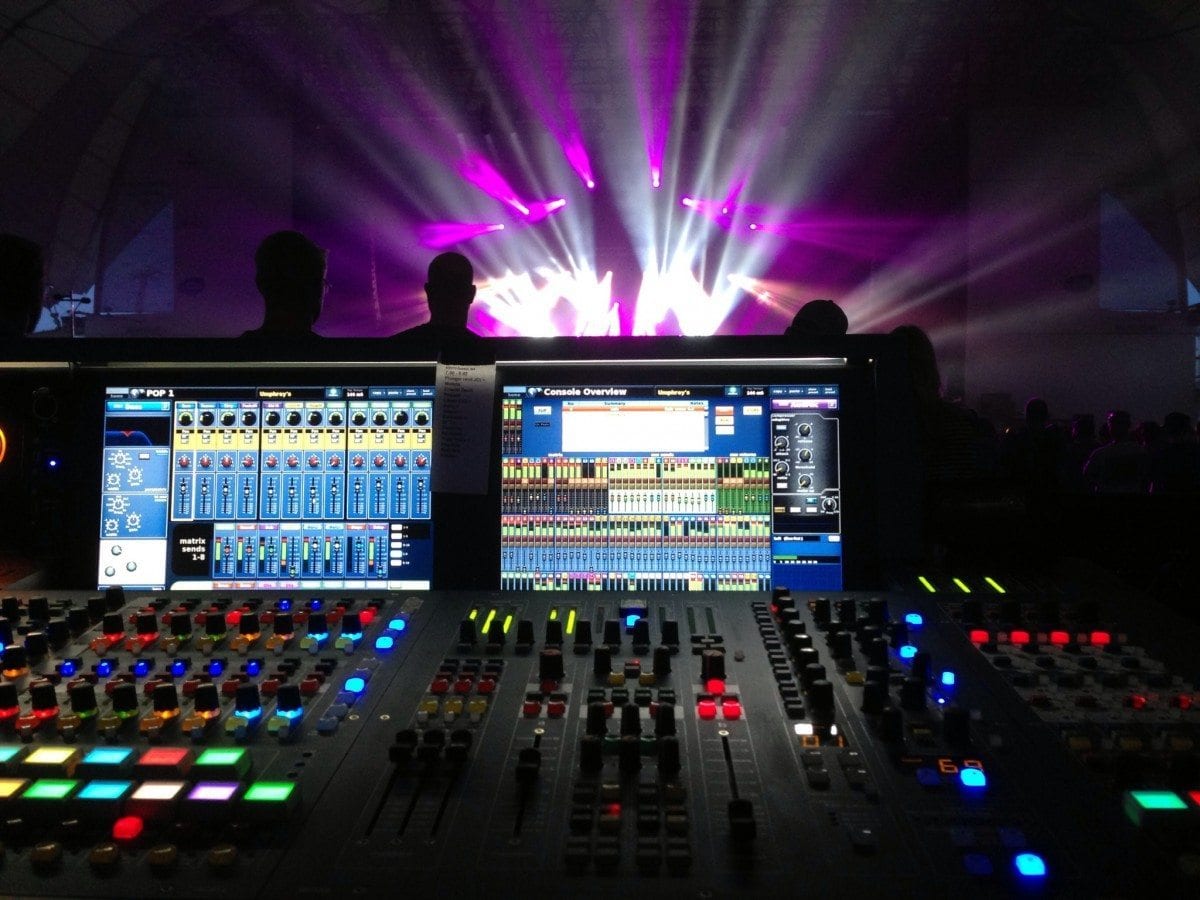 As the lights fade, your senses come back down from overload. Music’s deep resonation has found a perfect match in the visual space the lights play in. The show’s temporary nature makes the combined effort more of a traveling work of art; setting up only to tear down again. The role of the lighting designer is only going to grow from here, leaving a legacy that’s equally important as the guys with instruments. There might be a sensory difference with what an LD brings to the table, but their absence would certainly leave the band in the dark.
As the lights fade, your senses come back down from overload. Music’s deep resonation has found a perfect match in the visual space the lights play in. The show’s temporary nature makes the combined effort more of a traveling work of art; setting up only to tear down again. The role of the lighting designer is only going to grow from here, leaving a legacy that’s equally important as the guys with instruments. There might be a sensory difference with what an LD brings to the table, but their absence would certainly leave the band in the dark.


Comments are closed.